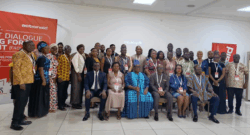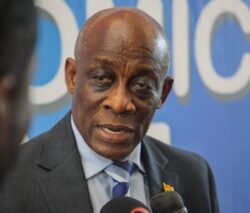For the first time, the football biggest gathering, usually held in June, had to be postponed to November; and for one month, all eyes were on the tiny Gulf State of Qatar to find out if it could host the 2022 FIFA World Cup.
Naysayers threw cold water on the Gulf State’s ability to host football’s greatest event but they had to take their words back. The ‘November’ World Cup will go down in history as one of the most well-organised football event. Record-breaking expenditure – reportedly estimated at US$340billion in total infrastructure, dwarfing all previous World Cups – was overshadowed by negative coverage around its alleged human rights record, poor treatment of migrant workers and LGBTQI+ people, and revelations of corruption surrounding its winning bid.
However, the Gulf State of Qatar has exhibited and showcased an outstanding model in hosting the FIFA World Cup by demonstrating its ability to host a successful major sporting event like the football Mundial.
It is noteworthy that Qatar has a population of a little above three million but its infrastructure was able to cope with the thousands that descended on it for the first ever major international football tournament to be held in a Muslim state in the Middle East.
The journey from Accra via Qatar Airways was one of mixed feeling, especially after reading about the enforcement of strict Islamic practice by the host government and all the negative media commentaries.
Touching down at the Hamad International Airport (HIA) – the 21st century architectural edifice was something else. There was little hassle getting through security and immigration at this imposing ultra-modern facility.
Opened in 2014 with the ambition of turning the Arabian Gulf city of Doha into a global aviation hub serviced by Qatar Airways, HIA now handles more than 30 million travellers a year, according to a CNN Travel report. HIA is a peaceful airport and emerging as a major player in arts and culture, departing passengers are given the opportunity to feast on beautiful artworks while waiting for their connecting flights. For those who have fats wallets, the shops are in abundance, showcasing everything. Cuisines are in abundance at the airport.
The city is reputed to have the lowest crime rate but authorities did not take chances; security was raised to the highest level for the tournament, with a lot of police officers patrolling the metro, stadia and other public places to ensure visitors felt safe to go about one’s activities without fear.
Your Hayya Card comes in handy and helps you to navigate around with ease. The Hayya card (Fan ID) is a personalised document that is issued to, and required of every single person attending any of the FIFA World Cup Qatar 2022 matches. Both a Hayya card (Fan ID) and applicable match ticket are required to access the stadium on match day. It also gives access to the metro and buses.
Since winning the bid to host the event 12 years ago, the tiny Gulf Nation has eyed an ambitious goal of increasing tourism to six million visitors a year by 2030, up from 2.1 million in 2019 – and its successful hosting of the just ended World Cup is expected to deliver Qatar the tourism boost it is hoping for, and compete with neighbours. Abu Dhabi and Dubai have successfully ventured into another venture, making their countries attractive to both investors and tourists.
It has delivered on major infrastructure projects, and presented visitors with iconic stadia, advanced technology, exceptional fan experience, including an efficient transportation network.
Known for its money, Qatar is one of the wealthiest nations in the world, with a reported Gross Domestic Product of US$179.6billion in 2021. That apparent opulence was on display everywhere one went to during the tournament.
Learning from other host countries – where stadia were built but become redundant after the tournament, Qatar’s newly constructed and renovated stadia – one of which was designed as a temporary facility – are to be dismantled and reused in other forms.
People of diverse ethnic, linguistic and cultural backgrounds live in Qatar. Though its official language is Arabic, English is also commonly used; so, one is not found wanting in the city, while one can also hear Malayam, Urdu, Hindi, Farsi, and other South and Southeast Asian languages.
Islam is also not its only religion as the nation is home to a sizeable number of other religious denomination, including Buddhism, Hinduism, Egyptian Coptic, and the Bahá’í faith.
Doha’s diversity is due to the migrants who make up 94 percent of Qatar’s workforce. They are from India, Pakistan, Nepal, Iran and Africa. The majority of them work in trades or in unskilled jobs.
My experience at the Brazil-Cameroon match was very memorable. The Brazilian fans had too much energy. They supported their team with all the passion that they had. Although they had already qualified, the noise on our way to the Lusail Stadium was something else. Unfortunately, they were crest fallen after the match. A Brazilian journalist with the team was so sad that he cursed the players and wondered what awaits him back home.
Lusail Stadium
The design inspiration of this stadium is the interplay of light and shadow that characterises the fanar lantern. This stadium has been busy throughout the tournament as a number of matches have been played here, including the opening and final games. It also hosted the Brazil vs Cameroon match, which the latter won.
After the World Cup, the 80,000-capacity stadium will be converted into a unique community hub of schools, housing, shops, cafés and health clinics as part of Qatar’s commitment to sustainable development.
Credit: Shutterstock











